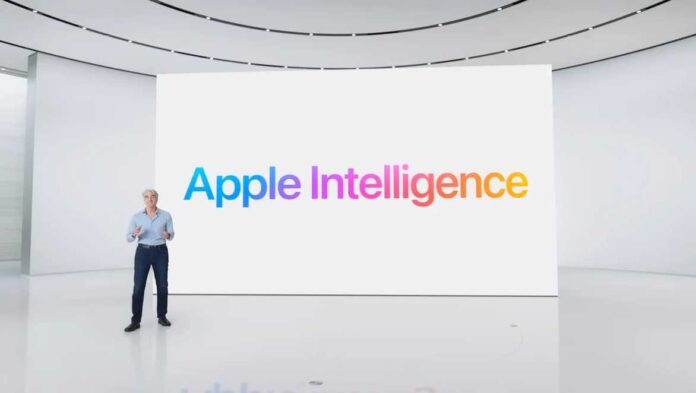- Apple has introduced advanced AI models in iOS 18, iPadOS 18, and macOS Sequoia.
- On-device and server-based models outperform competitors, favored by human graders.
- There is a strong emphasis on privacy, diverse data, and responsible AI principles.
Apple’s latest advancements in artificial intelligence showcased at this year’s WWDC, are making waves.
The tech giant has integrated sophisticated AI models into its upcoming iOS 18, iPadOS 18, and macOS Sequoia, which are designed to handle a variety of everyday tasks like writing, summarizing notifications, creating images, and automating app interactions.
These models are drawing praise, particularly for their impressive performance in human assessments.
Two Types of AI Models: On-Device and Server-Based
Apple has developed a 3-billion-parameter on-device language model, alongside a more robust server-based model that operates on Apple silicon servers via Private Cloud Compute (PCC).
These models are part of Apple Intelligence, which also includes a coding model for Xcode and a diffusion model for creating visual content. Together, they cater to a wide range of needs for both users and developers.
Privacy and Responsible AI
A key aspect of Apple’s AI strategy is a commitment to Responsible AI principles. This means that their tools are designed to empower users, represent diverse communities, and protect privacy.
Much of the processing happens on-device, while the PCC ensures security when server-based computations are needed.
Apple trains its models using licensed and publicly available data, with strict filters to exclude personal information and low-quality content.
They use a combination of human-annotated and synthetic data, along with innovative algorithms to refine their models post-training.
Performance and Technical Excellence
To ensure top-notch performance, Apple has optimized its models using advanced techniques like grouped-query-attention, low-bit palletization, and dynamic adapters.
The on-device model boasts a vocabulary of 49,000 words, while the server model’s vocabulary is twice as large, supporting additional languages and technical terms.
The on-device model can generate text at a rate of 30 tokens per second, a speed boosted further by token speculation.
Adapters play a crucial role by fine-tuning the models for specific tasks without altering the core parameters.
These adapters are dynamically loaded as needed, which helps in managing memory efficiently and maintaining quick response times.
Human Graders Prefer Apple’s Models
Apple places a strong emphasis on the safety and helpfulness of its AI models. They evaluate their models through extensive human assessments, using real-world prompts from various categories.
According to Apple, their on-device model outperforms larger competitors like Phi-3-mini and Mistral-7B, while their server model holds its own against DBRX-Instruct and GPT-3.5-Turbo.
These claims are backed by benchmarks where human graders consistently preferred Apple’s models over those of established rivals.
Apple’s latest AI models are not just about high performance; they’re designed with a strong focus on user privacy, responsible use, and inclusivity.
By combining cutting-edge technology with a robust ethical framework, Apple is setting new standards in the AI landscape.
Their models’ preference by human graders over leading competitors underscores Apple’s growing competitiveness in the field of artificial intelligence.

